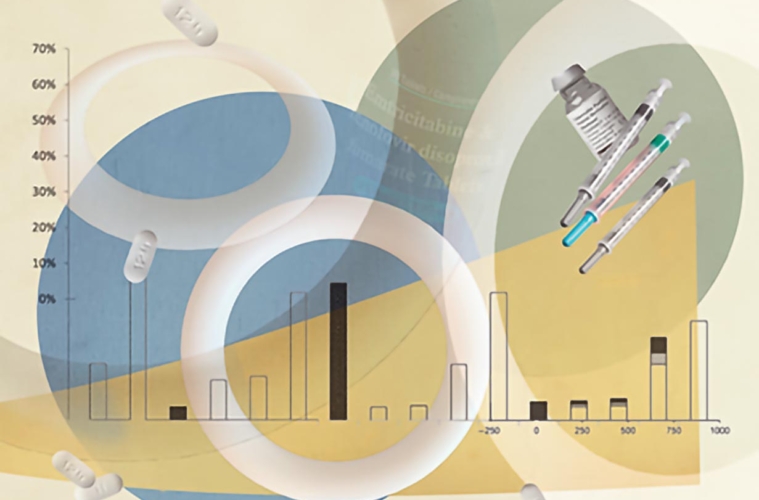Katie Williams ’15 addresses the question
For years, the only preventative medication option for HIV has been a daily pill called oral PrEP. Short for pre-exposure prophylaxis, the PrEP pill has been taken around the world by people who have a high likelihood of exposure to HIV, including young women, men who have sex with men, sex workers, and people with a partner who is living with HIV. In the last five years, however, two new HIV prevention methods have been introduced to the market — the monthly dapivirine vaginal ring for people assigned female at birth (the PrEP ring) and a longer-acting injectable called cabotegravir for PrEP (CAB PrEP), administered every two months. These new methods are giving people a choice for the first time.
“When individuals have a choice of what method they’d like to use, it can improve their adherence to that method, and they are more likely to continue using it,” says Katie Williams ’15, a technical officer with the nonprofit development organization FHI 360. Just because options exist in market, however, doesn’t mean individuals have a choice, says Williams, who works with the MOSAIC (Maximizing Options to Advance Informed Choice for HIV Prevention) project, a five-year global project funded by the U.S. President’s Emergency Plan for AIDS Relief through USAID. She adds: “We assume everyone supports choice, but what does that actually mean?”
Along with several colleagues, Williams set out to answer that question as lead author of a recent article in the British medical journal the Lancet HIV. The piece lays out eight principles for product developers, policymakers, and medical providers to consider when making decisions about how to develop, assess, and introduce new methods for HIV prevention, based on the authors’ experience working on HIV prevention in 10 countries in sub-Saharan Africa.
Williams first began working on issues around global health at Colgate, where she was a history and geography double major. “There wasn’t yet a public health minor, but my professors were supportive in giving me the tools and opportunities to work on sexual and reproductive health and rights in whatever way I could,” she says. In one history seminar paper, for example, she investigated perceptions of sexuality in the interwar period in France. As part of the Thought Into Action program, Williams and another student, Emily Hawkins ’15, created a concept called the “condom truck” to distribute condoms and positive, safe, sexual health information on campus. She also gained international experience by traveling to Samoa for a semester to learn about the impact of globalization on local communities and research tsunami preparedness and environmental security. “That on-the-ground, person-to-person interaction started me onto the work I am doing now,” says Williams, who later went to Fiji with the Peace Corps to work with women and youth on gender equity and reproductive health education.
There are many reasons why a person might prefer one PrEP method over another, she says. A sexually active young woman living in a geographic area with a HIV prevalence might need to be discreet around family members, opting for the vaginal ring, which can last up to a month, rather than taking a more obvious daily pill. On the other hand, someone might only need short-term prevention, rather than the extended prevention the ring or the injection provides. “Or it can be as simple as hating needles or the burden of taking a pill every day,” Williams says. “It really depends on someone’s preferences, circumstances, their partnerships, and where they are in life.”
Among the principles the article proposes are some that may seem more obvious, such as “availability” and “accessibility” to ensure that the prevention methods are suitable to users, offered in clinics, and priced affordably in all areas of a country. Others take a more upstream view, such as “participation,” ensuring that clinical trials by product developers include a wide range of individuals to ensure that methods are equally usable for everyone who may benefit from PrEP. Others target providers, urging clinicians not to discriminate or limit choices for patients based on cultural bias — for example, denying long-term preventative measures to young women based on a prejudice that they shouldn’t be sexually active. (The other principles are quality, privacy, confidentiality, and accountability.)
By publishing the article in such a high-profile journal, Williams hopes to support health advocates in helping craft government policies that will maximize choice and get donors and product developers thinking ahead of time what it will take to make all options affordable. “We wanted to emphasize how the levers of choice operate across the entire health ecosystem,” she says, “and give folks in the prevention space more solid ground to stand on when they are advocating for choice, which should be the goal we are all aiming toward with the advent of new PrEP methods.”

